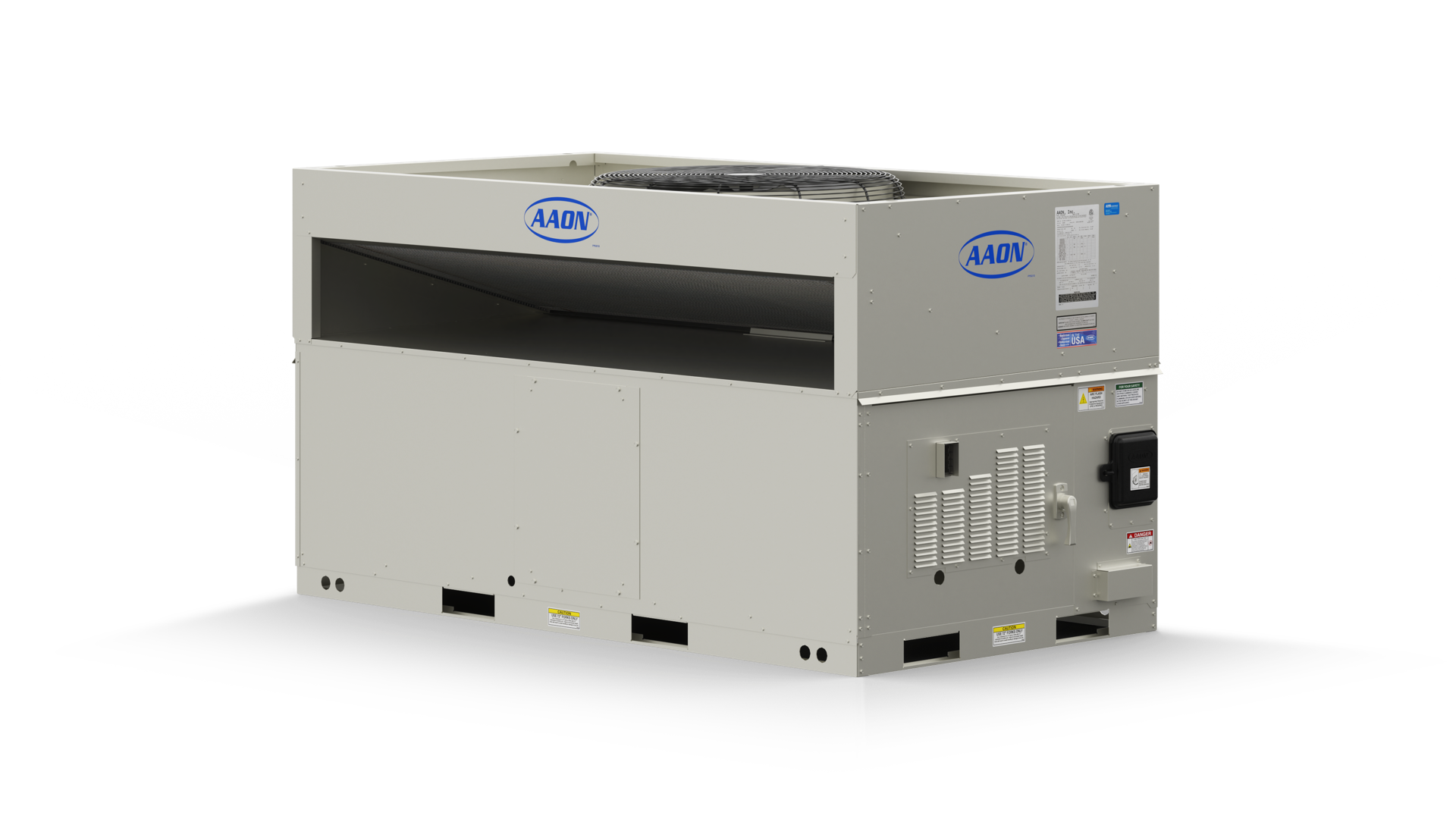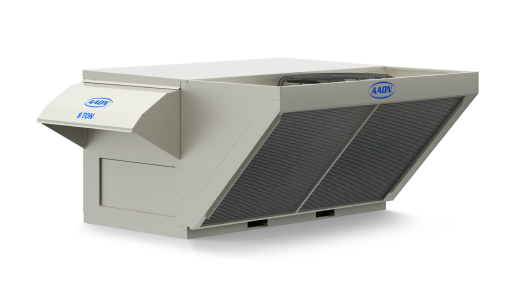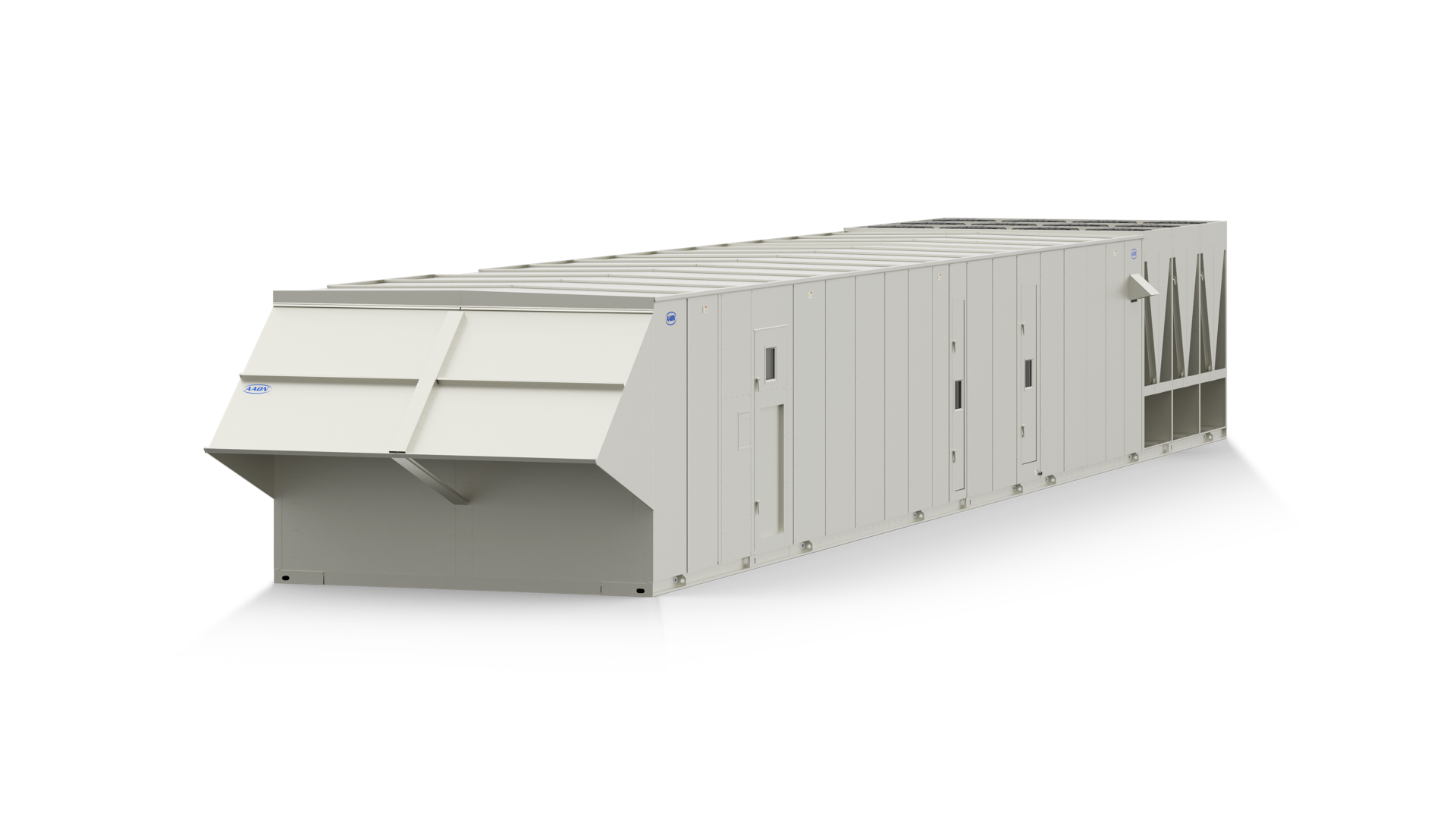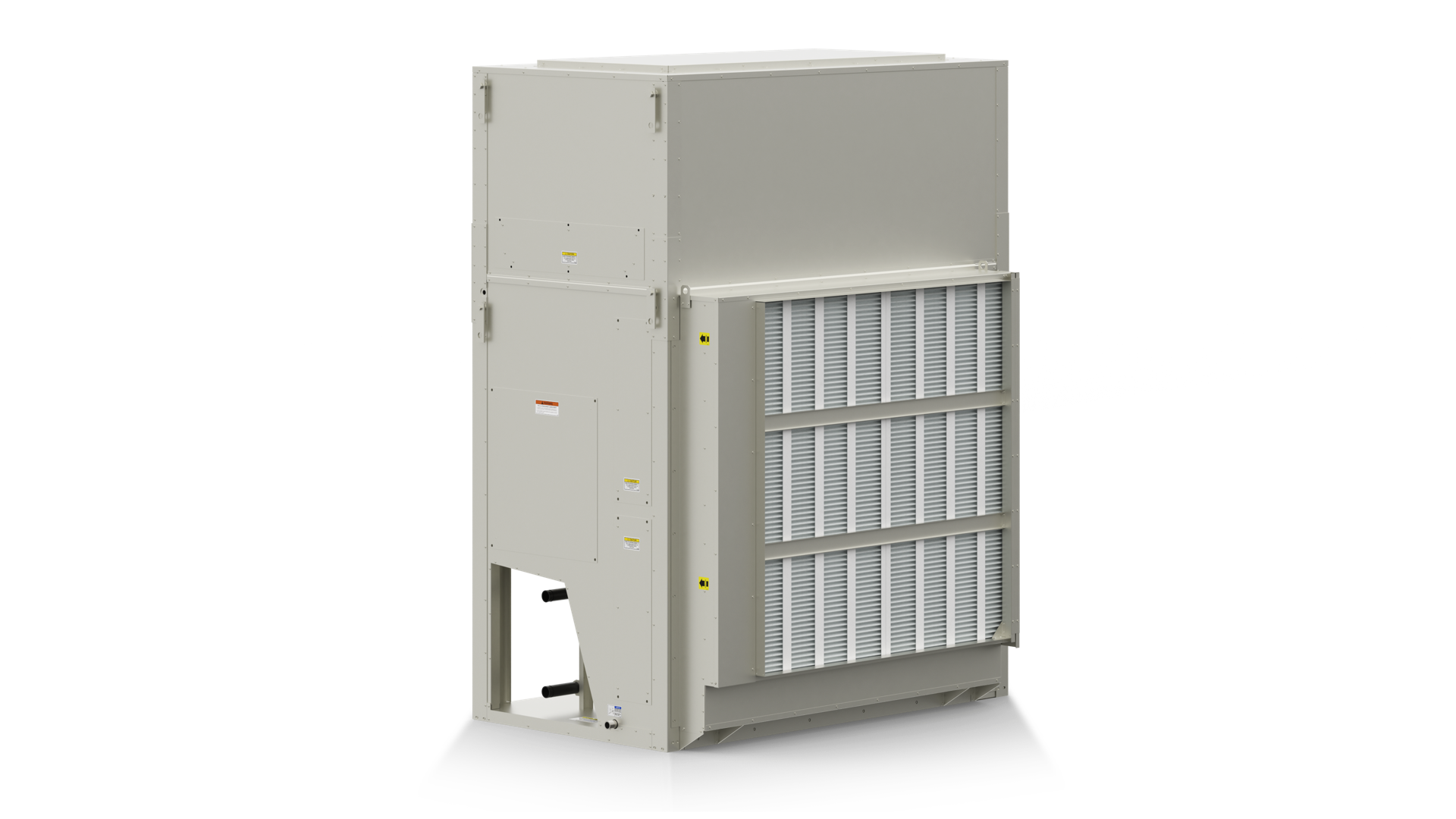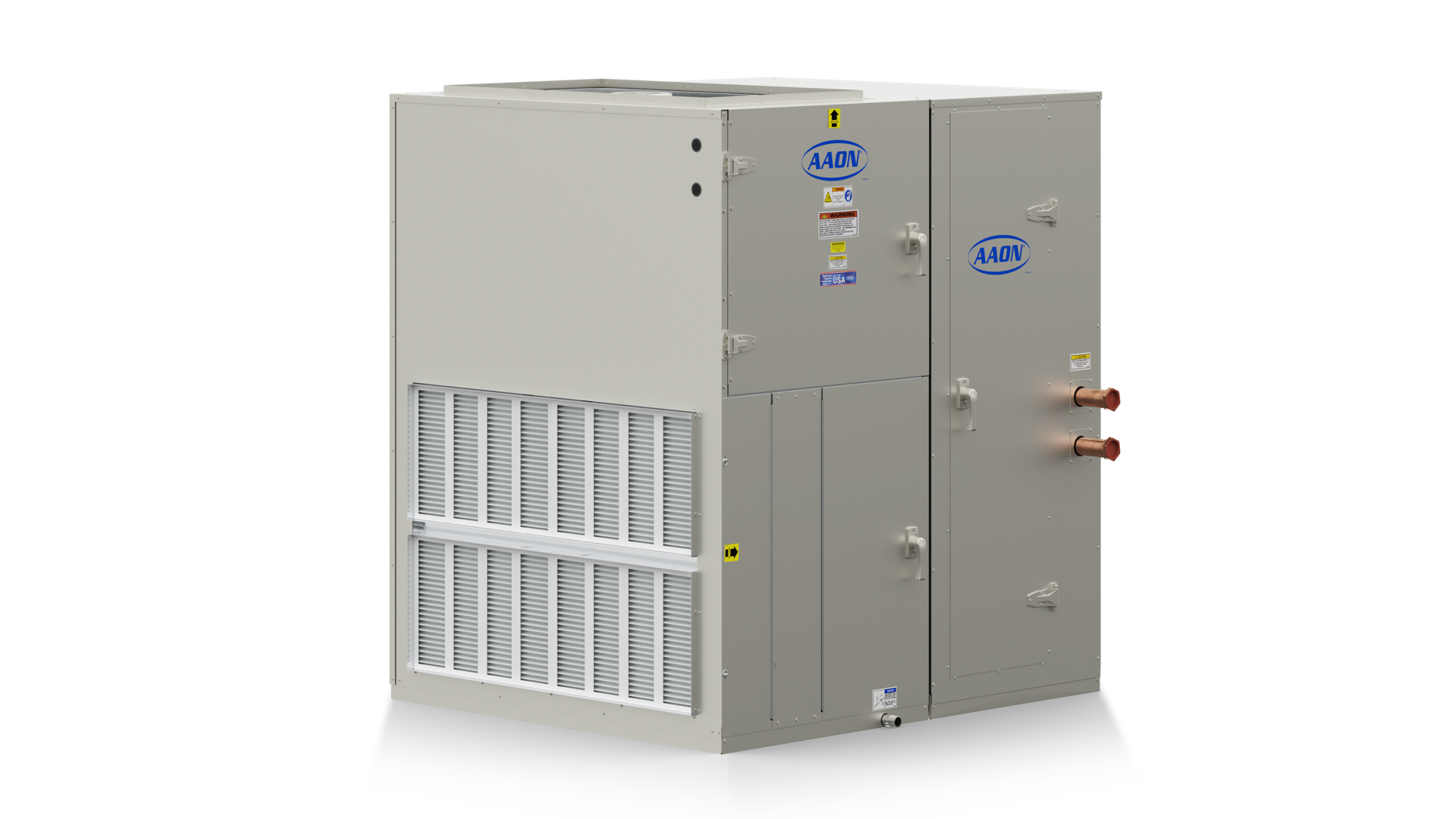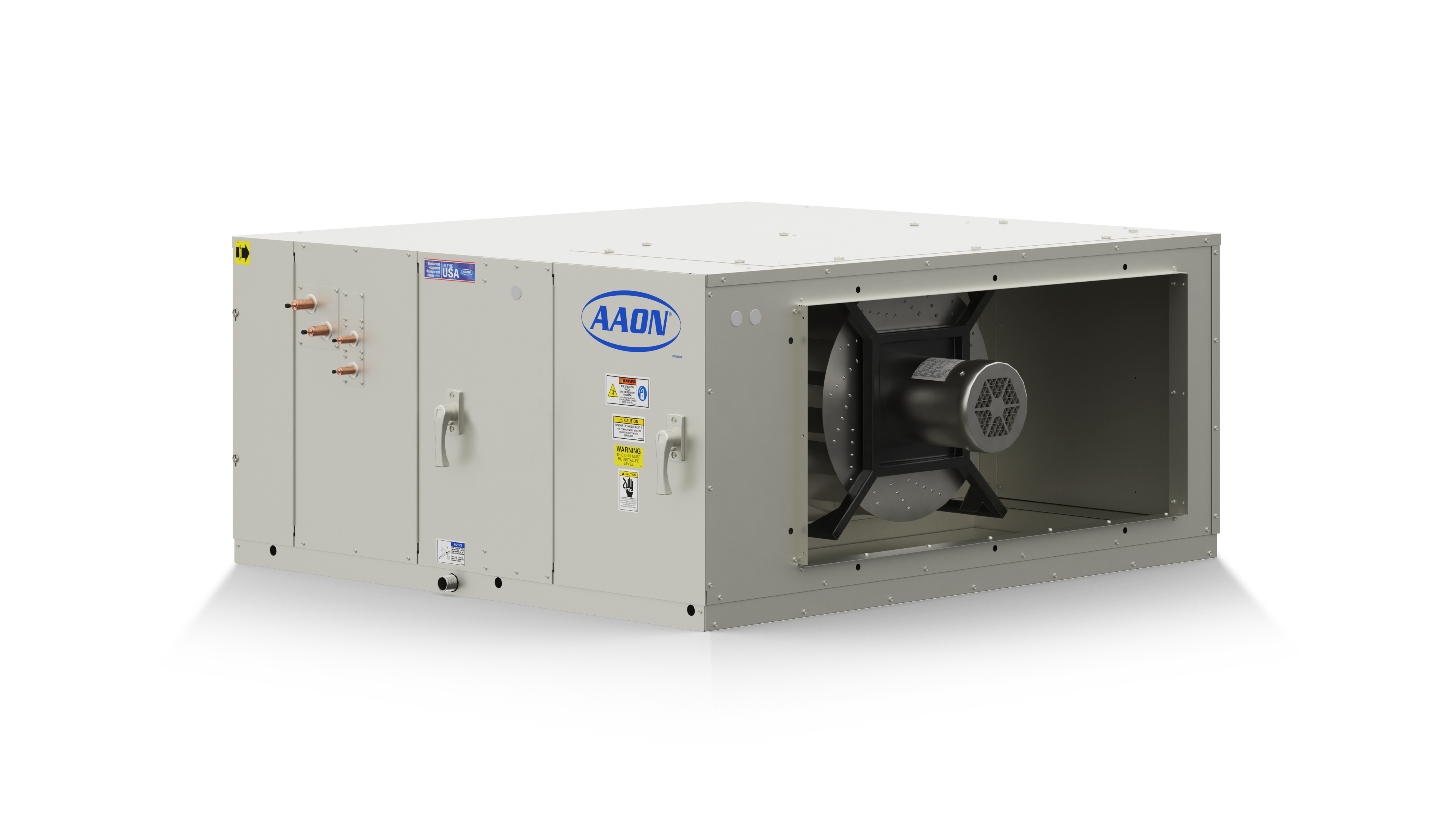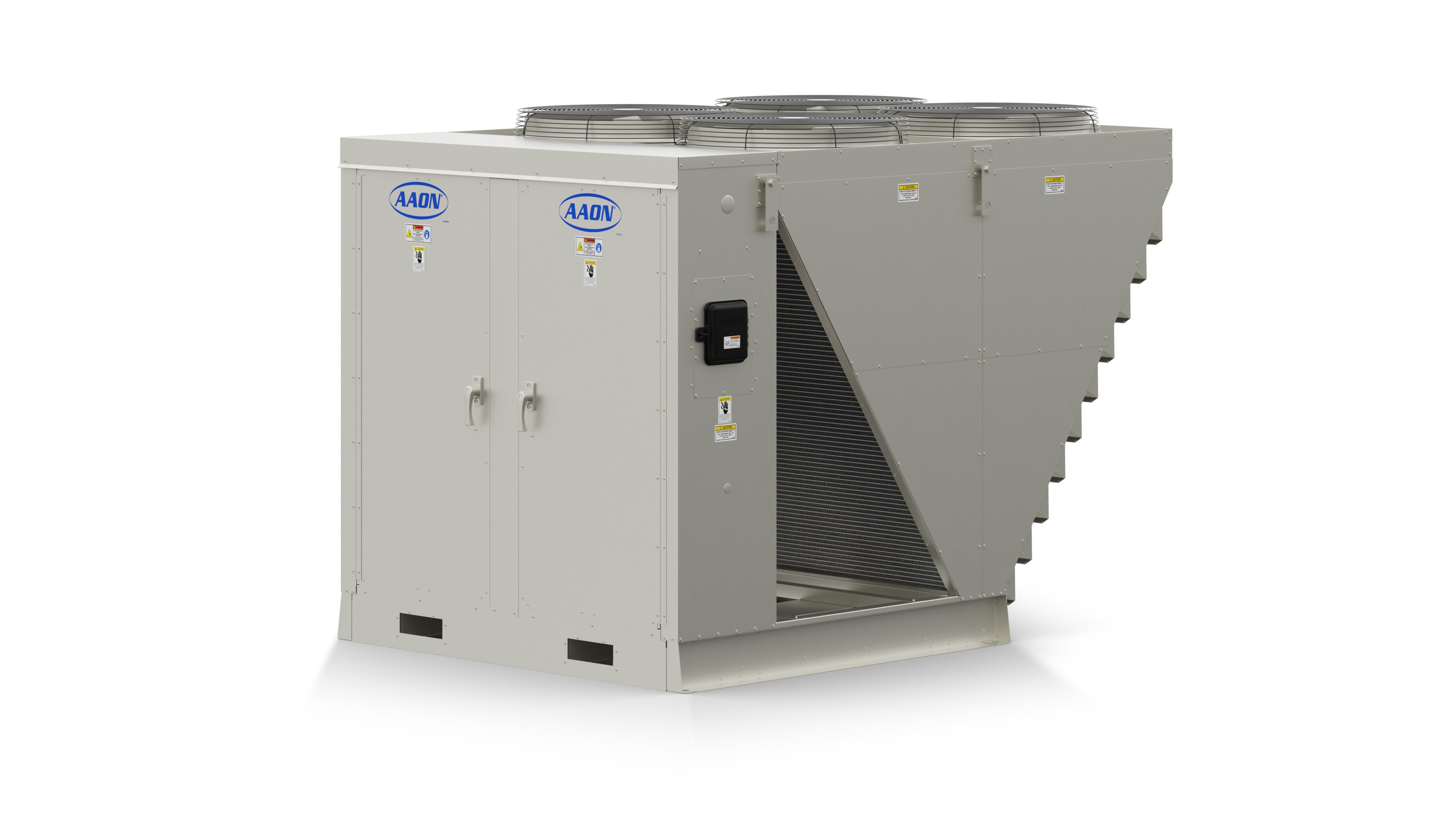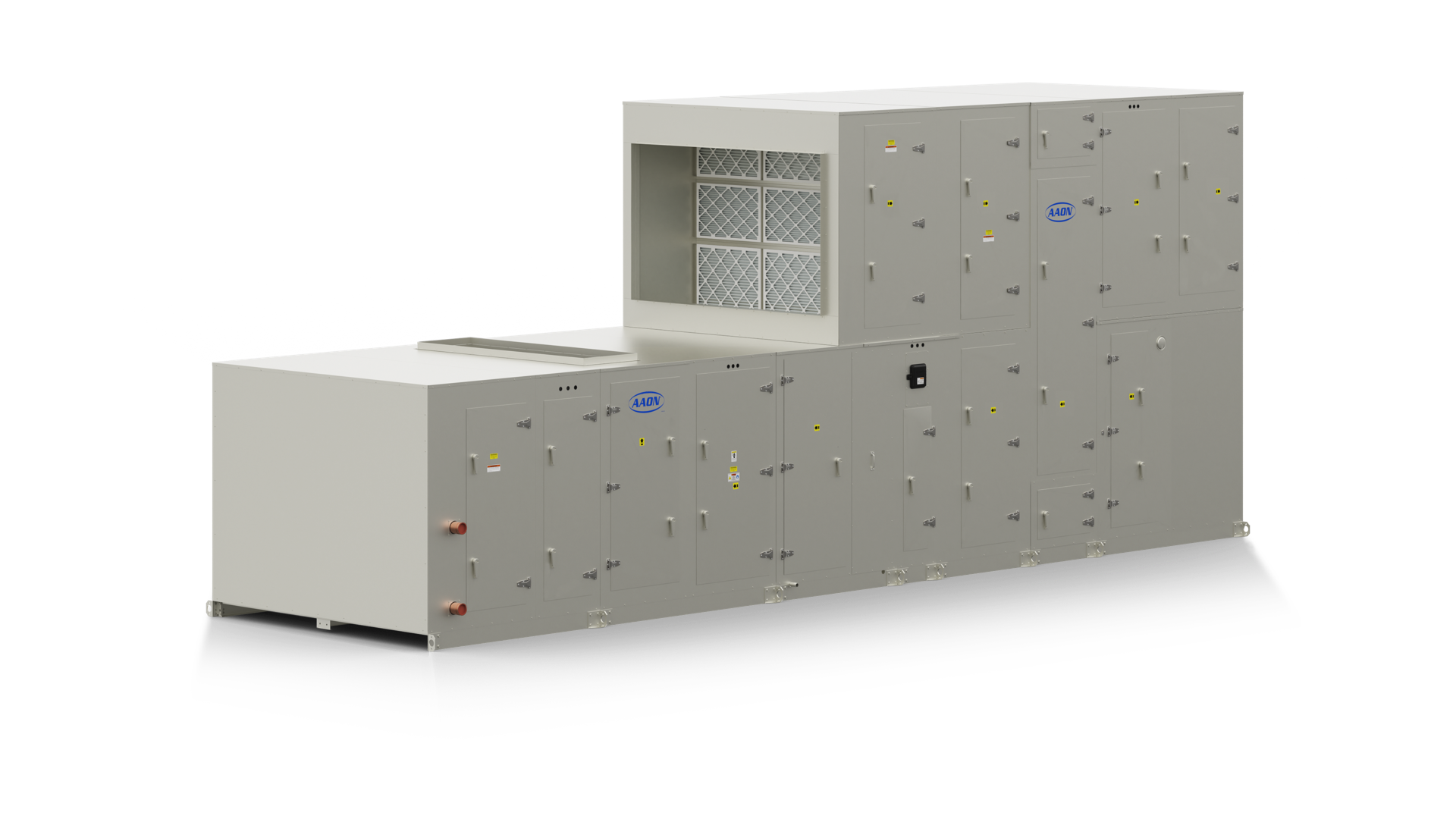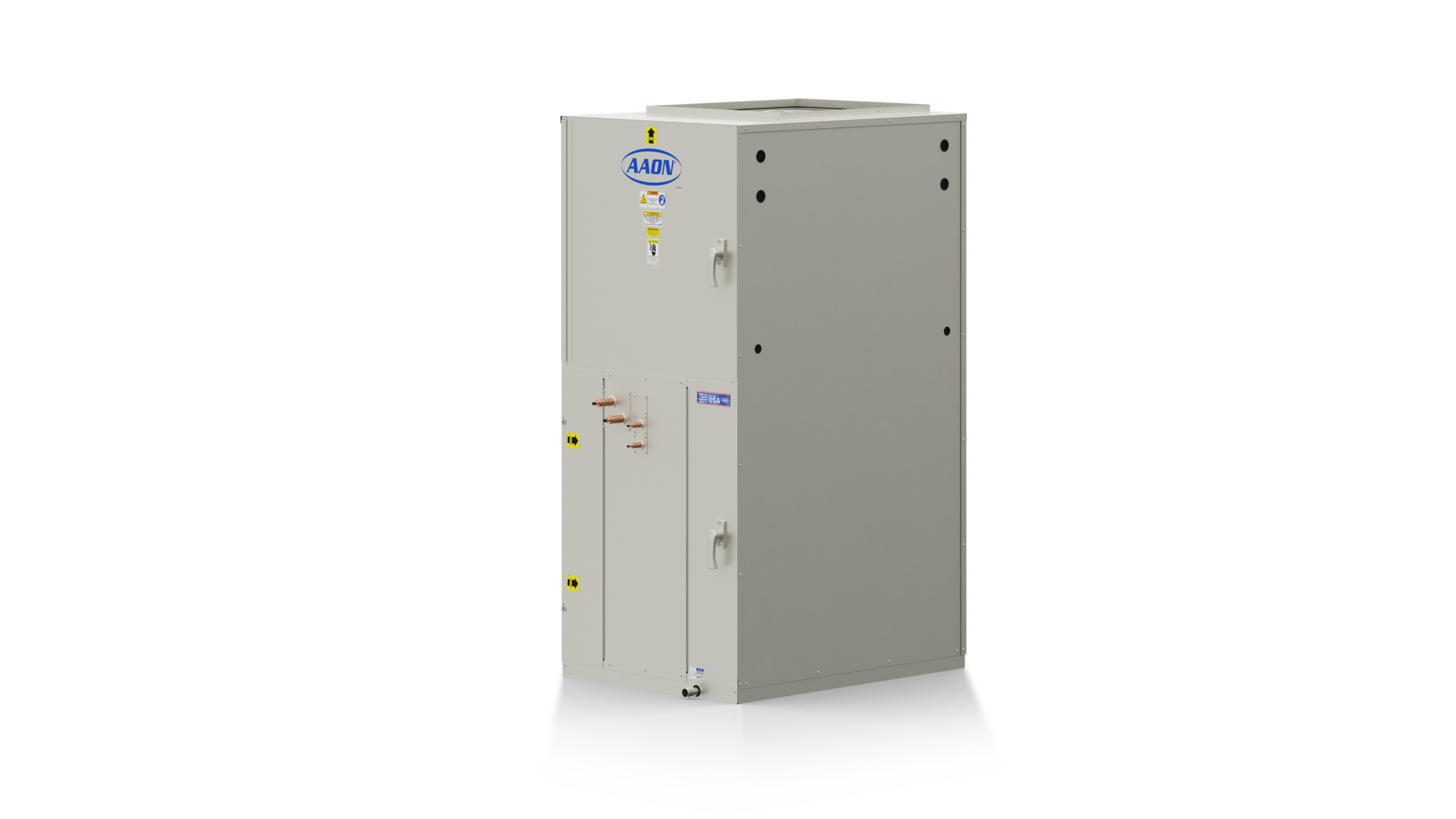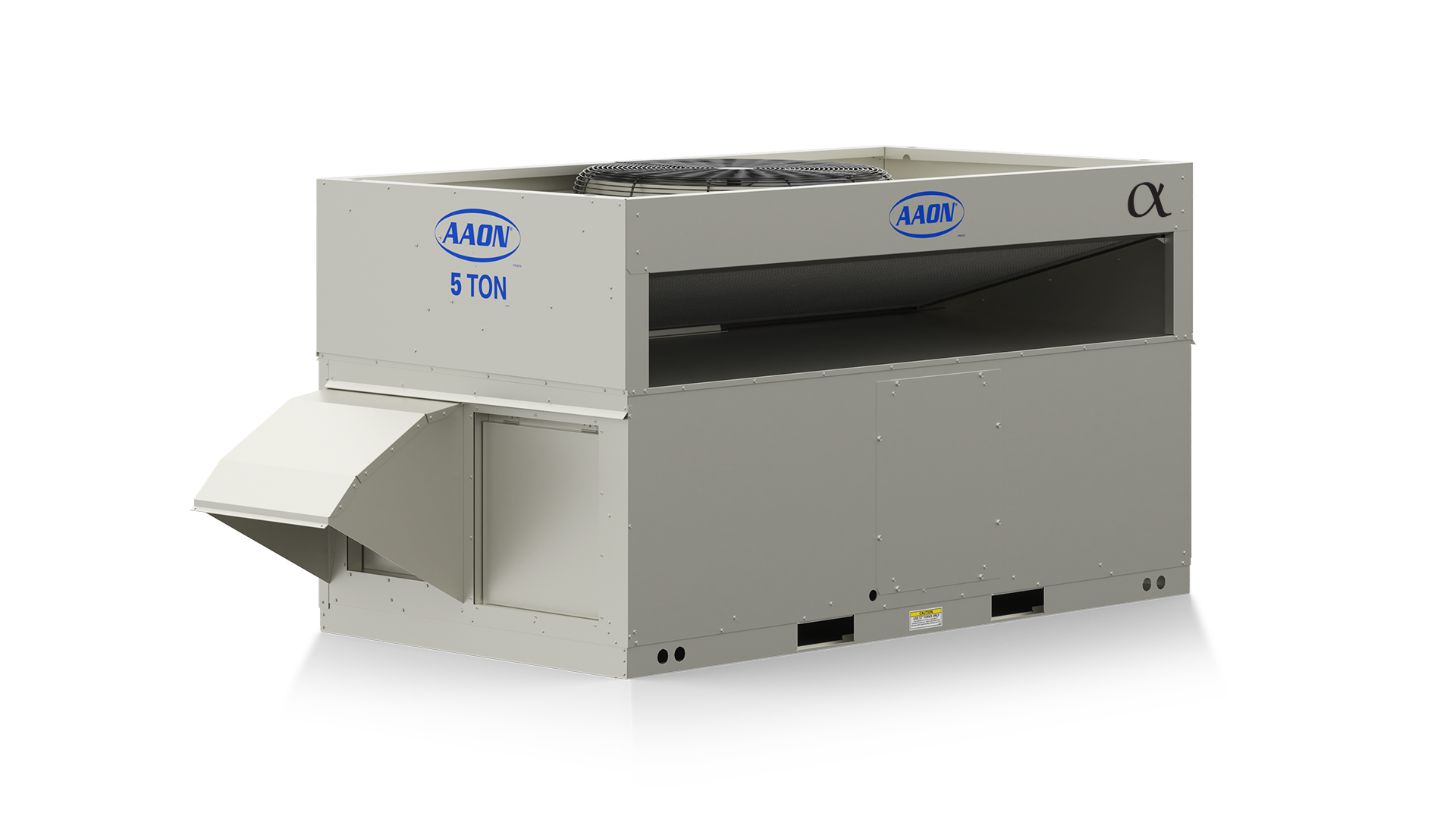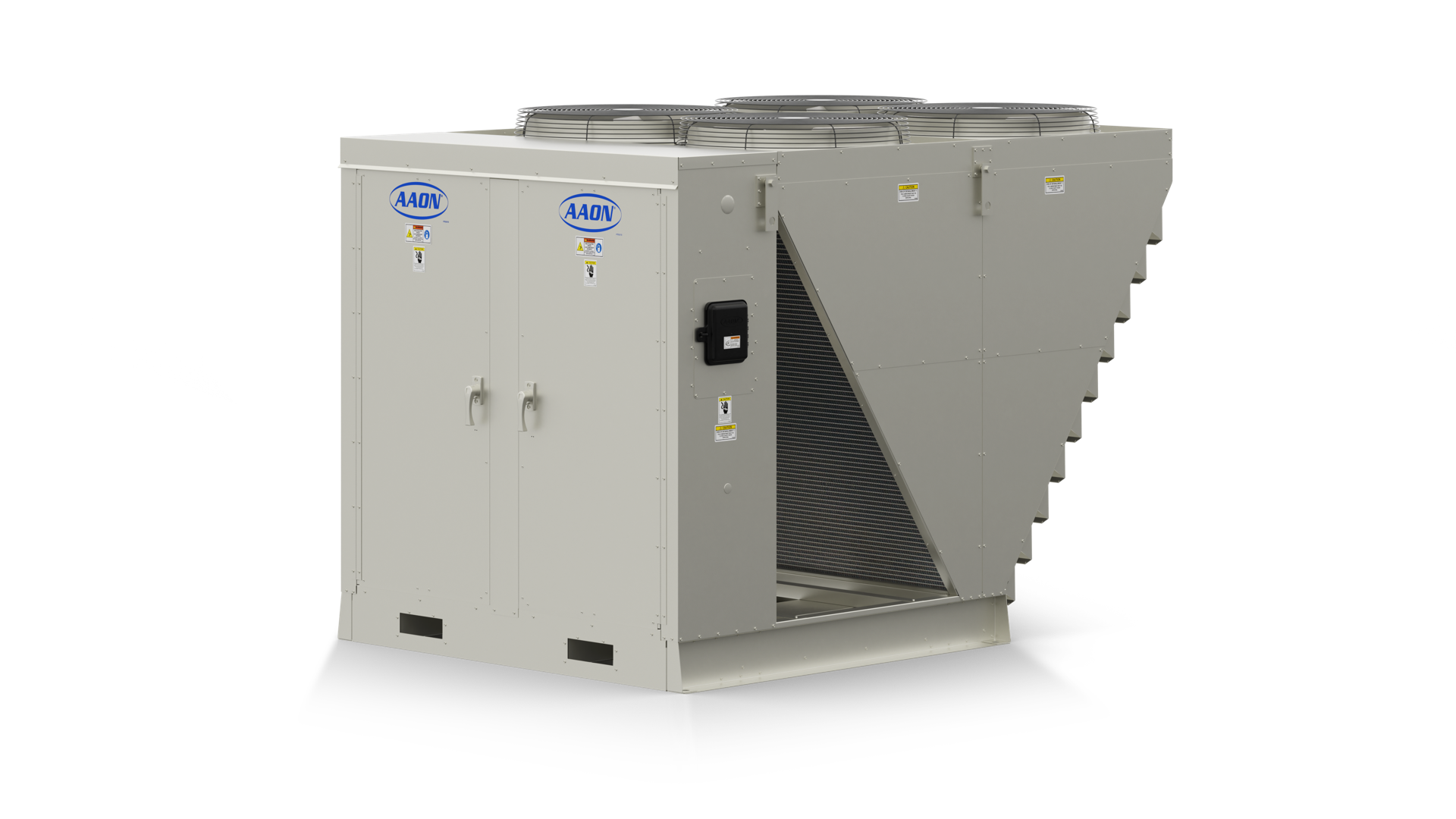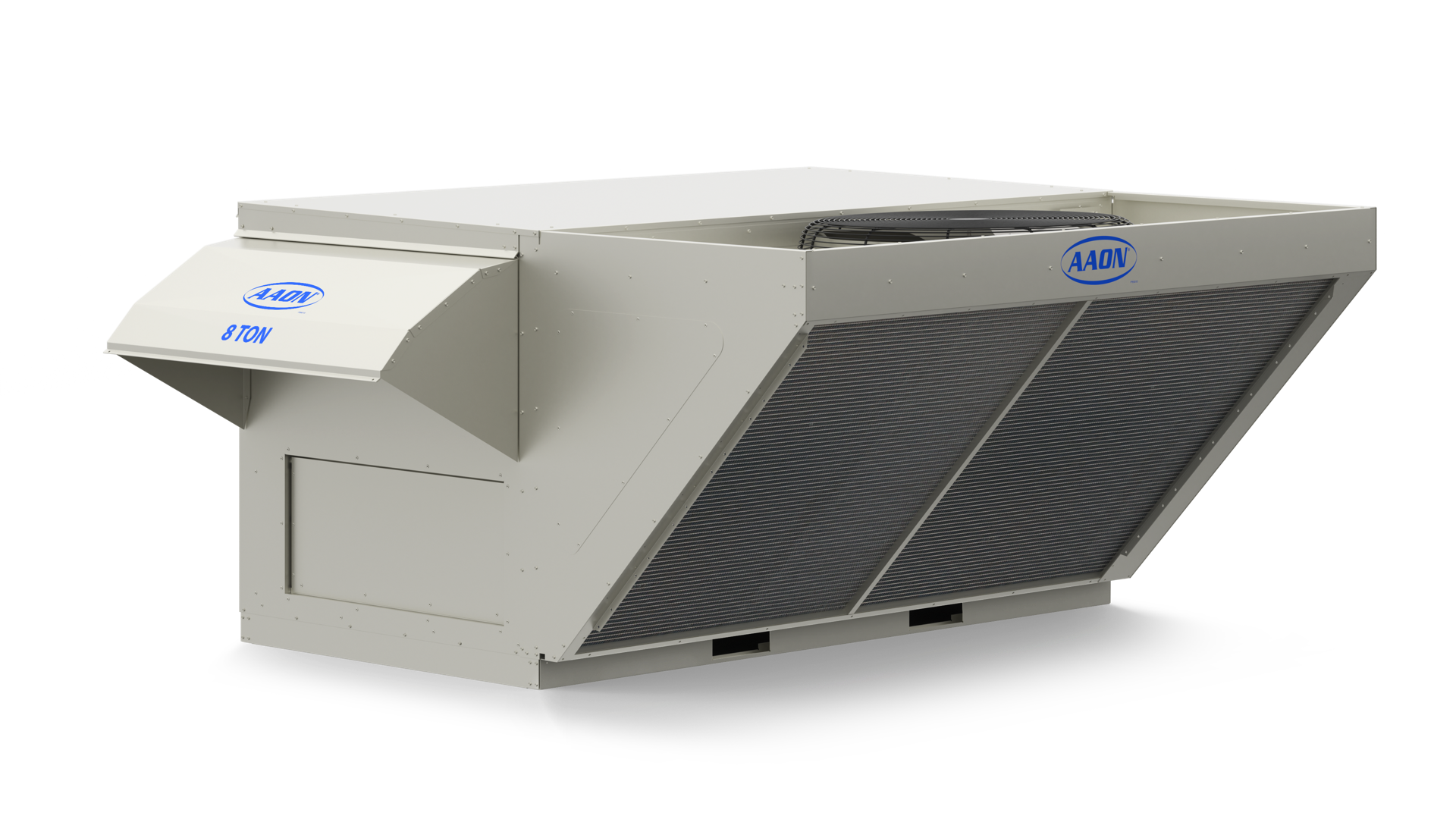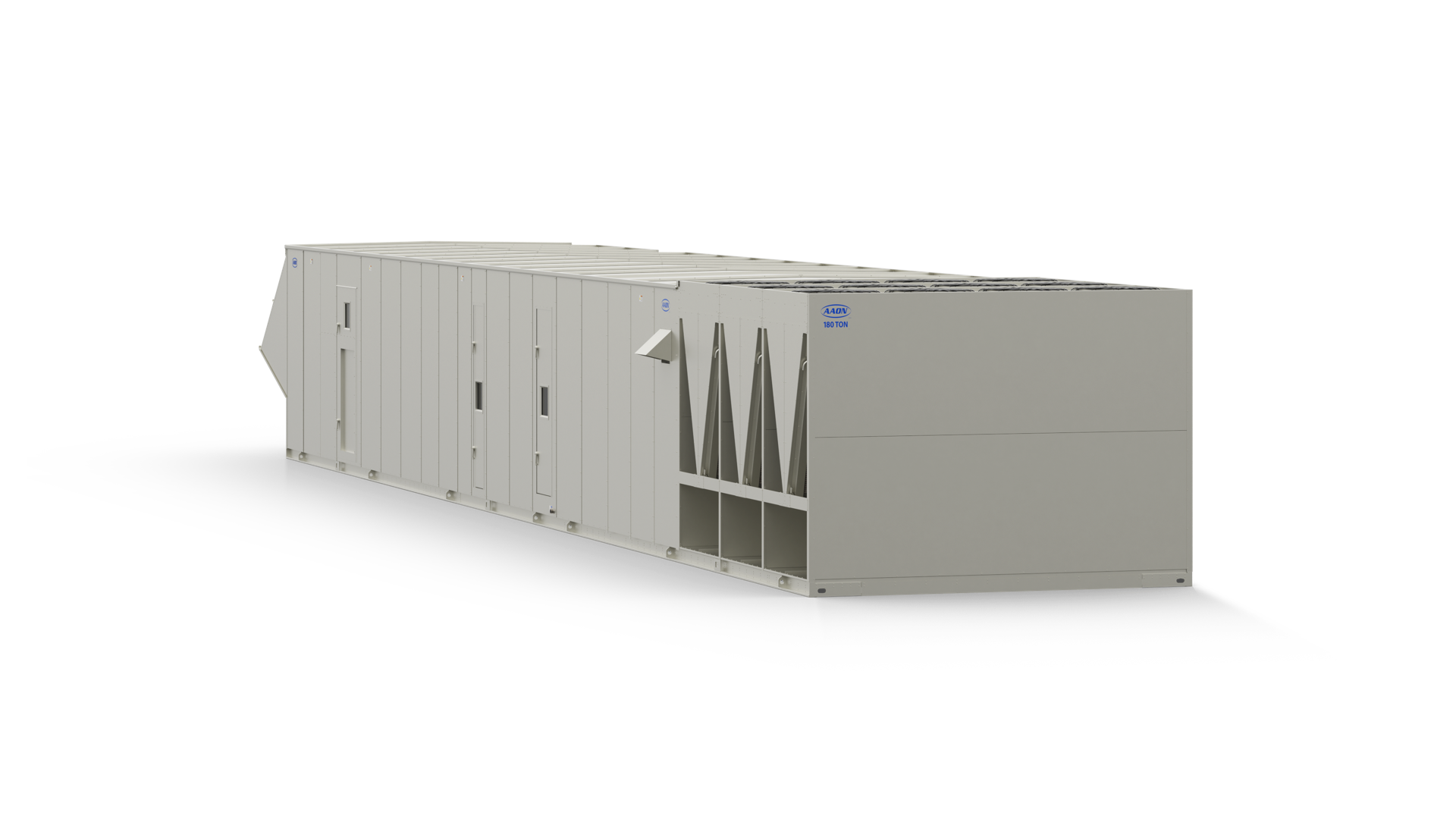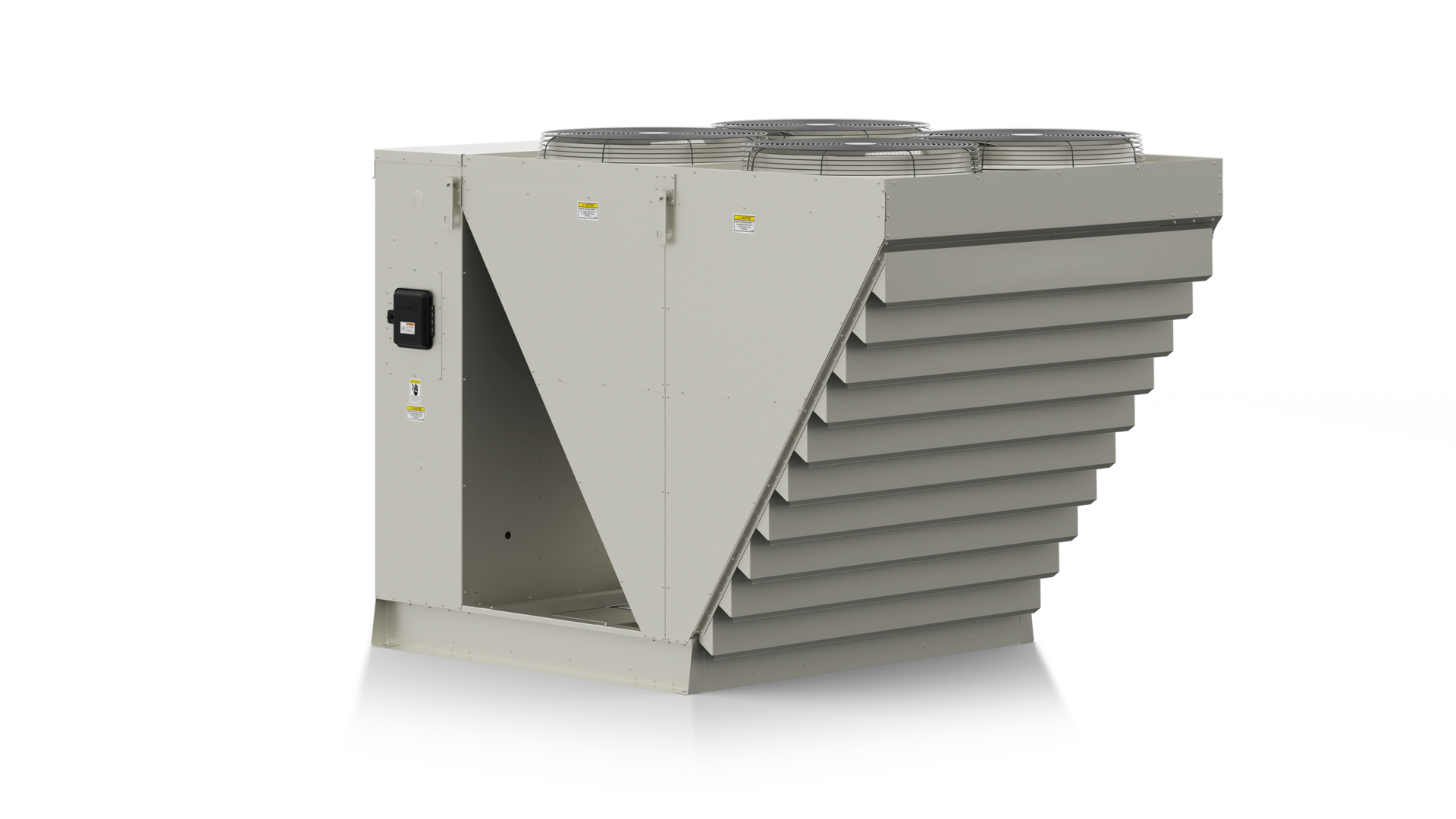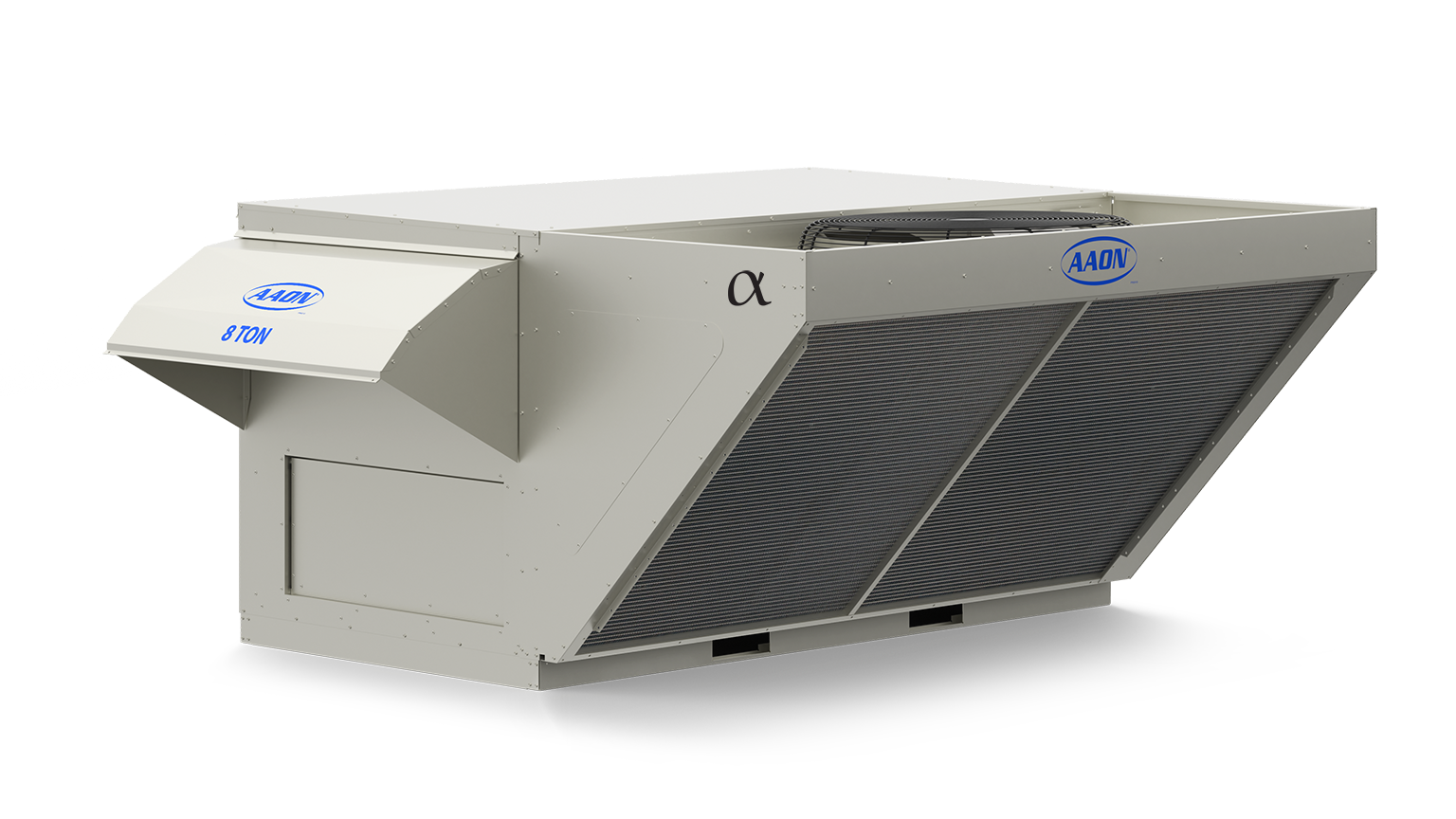Natatoriums
About Natatoriums
Natatoriums, or indoor pool facilities, are complex environments that require careful humidity control. These spaces demand a delicate balance between swimmer comfort, spectator comfort, building envelope protection, and energy efficiency. Whether in schools, universities, sports complexes, or recreational facilities, selecting the right HVAC solution is crucial for overcoming the unique challenges of indoor pool environments.
The AAON Difference in Natatoriums
-
Precise Temperature & Humidity Control
Our systems feature corrosion-resistant space temperature and humidity sensors designed to withstand the corrosive environments typical of indoor pools. The innovative, polymer-coated modulating hot gas reheat system ensures optimal humidity control without compromising energy efficiency. High latent loads are expertly managed to prevent overcooling, maintaining ideal conditions for both swimmers and spectators.
-
Occupant Comfort
AAON systems maintain high relative humidity to enhance swimmer comfort and reduce pool evaporation rates. By warming the air above pool temperature, emerging swimmers remain comfortable, eliminating the chilling effect often experienced when leaving the water. At the same time, our advanced humidity control systems preserve comfort for non-swimmers, striking the perfect balance for all occupants.
-
Corrosion Resistance
The corrosive nature of pool water and the presence of chlorine and chloramines can accelerate the corrosion and rusting of HVAC equipment and components. AAON’s corrosion-resistant components, including polymer-coated coils and powder-coated polymer energy recovery wheels, have passed a 10,000-hour salt spray test and are specially designed to withstand such environments. Interior corrosion protection options resist chemicals and humidity, extending the lifespan of your equipment and reducing operational costs.
-
Energy Efficiency
Natatoriums have high energy demands due to heating, dehumidification, and pool water circulation. AAON’s systems are engineered for maximum efficiency, incorporating features like variable capacity compressors and energy saving controls.
-
Optimal Airflow
Maintaining negative air pressure in the pool area is essential to prevent the spread of humid, chlorine-filled air to other parts of the facility. AAON systems feature advanced power exhaust and space pressure transducers, ensuring optimal airflow and air quality throughout the natatorium and adjacent spaces.
Our systems feature corrosion-resistant space temperature and humidity sensors designed to withstand the corrosive environments typical of indoor pools. The innovative, polymer-coated modulating hot gas reheat system ensures optimal humidity control without compromising energy efficiency. High latent loads are expertly managed to prevent overcooling, maintaining ideal conditions for both swimmers and spectators.
AAON systems maintain high relative humidity to enhance swimmer comfort and reduce pool evaporation rates. By warming the air above pool temperature, emerging swimmers remain comfortable, eliminating the chilling effect often experienced when leaving the water. At the same time, our advanced humidity control systems preserve comfort for non-swimmers, striking the perfect balance for all occupants.
The corrosive nature of pool water and the presence of chlorine and chloramines can accelerate the corrosion and rusting of HVAC equipment and components. AAON’s corrosion-resistant components, including polymer-coated coils and powder-coated polymer energy recovery wheels, have passed a 10,000-hour salt spray test and are specially designed to withstand such environments. Interior corrosion protection options resist chemicals and humidity, extending the lifespan of your equipment and reducing operational costs.
Natatoriums have high energy demands due to heating, dehumidification, and pool water circulation. AAON’s systems are engineered for maximum efficiency, incorporating features like variable capacity compressors and energy saving controls.
Maintaining negative air pressure in the pool area is essential to prevent the spread of humid, chlorine-filled air to other parts of the facility. AAON systems feature advanced power exhaust and space pressure transducers, ensuring optimal airflow and air quality throughout the natatorium and adjacent spaces.
Key Considerations for Natatorium HVAC Design
-
Dehumidification
Natatoriums have high humidity levels due to water evaporation from the pool. Insufficient dehumidification can lead to mildew, accelerated surface deterioration, corrosion, and building structural damage. A robust dehumidification system is crucial to control moisture, prevent condensation, and maintain a comfortable environment. This ensures long-term protection and reduced operating costs.
-
Ventilation
Natatoriums have high humidity levels due to water evaporation from the pool. Insufficient dehumidification can lead to mildew, accelerated surface deterioration, corrosion, and building structural damage. A robust dehumidification system is crucial to control moisture, prevent condensation, and maintain a comfortable environment. This ensures long-term protection and reduced operating costs.
-
Air Balance and Distribution
Uniform air balance and airflow distribution are crucial to maintain temperature and humidity levels throughout the natatorium. Improper air distribution can lead to hot or cold spots, condensation issues, and discomfort for swimmers. Proper placement of supply and return vents, diffusers, and ductwork ensures a comfortable, healthy, and energy-efficient environment.
-
Equipment Sizing and Load Estimation
Designing HVAC systems for natatoriums requires careful consideration of factors such as pool size, location, occupancy, and environmental conditions to ensure optimal performance. Determining the correct equipment sizing, taking into account local codes and the unique demands of indoor pool environments, will ensure your system is configured for peak performance and long-term reliability.
Natatoriums have high humidity levels due to water evaporation from the pool. Insufficient dehumidification can lead to mildew, accelerated surface deterioration, corrosion, and building structural damage. A robust dehumidification system is crucial to control moisture, prevent condensation, and maintain a comfortable environment. This ensures long-term protection and reduced operating costs.
Natatoriums have high humidity levels due to water evaporation from the pool. Insufficient dehumidification can lead to mildew, accelerated surface deterioration, corrosion, and building structural damage. A robust dehumidification system is crucial to control moisture, prevent condensation, and maintain a comfortable environment. This ensures long-term protection and reduced operating costs.
Uniform air balance and airflow distribution are crucial to maintain temperature and humidity levels throughout the natatorium. Improper air distribution can lead to hot or cold spots, condensation issues, and discomfort for swimmers. Proper placement of supply and return vents, diffusers, and ductwork ensures a comfortable, healthy, and energy-efficient environment.
Designing HVAC systems for natatoriums requires careful consideration of factors such as pool size, location, occupancy, and environmental conditions to ensure optimal performance. Determining the correct equipment sizing, taking into account local codes and the unique demands of indoor pool environments, will ensure your system is configured for peak performance and long-term reliability.
All AAON HVAC products are highly configurable and designed to optimize your exact environment with cutting-edge engineering to push the boundaries in virtually any setting.
AAON stops at nothing to design the very best. Our systems set the industry standard for longevity and low cost of ownership.
AAON equipment is easy to access and convenient to work on. Our award-winning cabinet designs make it simple for technicians to service our units efficiently and affordably.
AAON HVAC units offer easy start-up and renowned reliability. Our products are tested for all functions and receive a unit-specific report before they leave the factory.
Related Products
Dare us to exceed expectations.
Regardless of the challenge, AAON has the capabilities to fulfill project requirements and deliver long-term value to customers. Contact an AAON Representative to learn how our products serve as your solutions.


